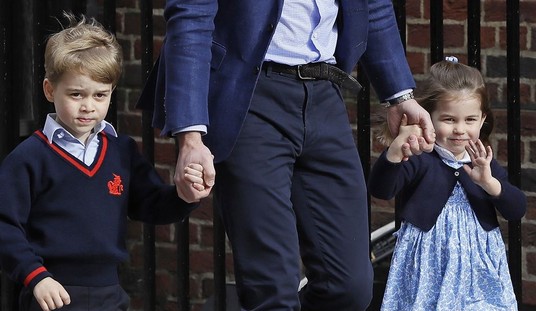Curiously, despite Bob Shrum’s prediction that his party will hold both houses of Congress this year, several articles and substantive blog posts recently went online analyzing, as Victor Davis Hanson puts it at NRO’s Corner, the “Anatomy of the Obama Meltdown:”
Had the Obamites been sober and circumspect after the 2008 election they would have realized that Obama had pulled off what McGovern, Mondale, Dukakis, and Kerry had not, due to a once-in-a-century perfect storm of about six events:
1) The September 15, 2008 financial meltdown that destroyed John McCain’s small, but steady lead.
2) The fascination with a possible landmark election of an African American candidate.
3) The inept McCain campaign that at times seemed more to wish to lose nobly than to win in a messy fashion.
4) The adroit Obama campaign that stressed centrist, “across the aisle” issues and style.
5) The “tingle in the leg” biased media coverage.
6) The first election without an incumbent or vice president since 1952 in which both candidates ran against the status quo Republican record.
Instead, Obama — egged on by obsequious advisers, an out-of-touch, hard-left base, and a toady media — decided that he had done what other Northern liberals had not, either because (a) the country was at last ready for European-style socialism, or (b) his singular charisma and talents could convince it that it was even when it was clearly not.
The result was that our Oedipus/Pentheus rushed headlong into socialized medicine, mega-deficits, needlessly polarizing appointments of the Van Jones type, and various federal takeovers, coupled with quite unnecessary editorializing about largely local matters — from the Skip Gates mess to the Arizona immigration law and Ground Zero mosque.
In retrospect, all of those circumstances make the iconography of Obama’s presidential run seem increasingly like a strange one-off campaign out of step with traditional American values. All men running for the White House have healthy egos; few place themselves on top of Styrofoam Rome, as Obama did at the 2008 Democratic National Convention. In “Obama as Roman emperor” — Jack Carlson of the Christian Science Monitor charts “the rise and fall of the propaganda master:”
Two years ago, Democrats were clamoring to ride in on Barack Obama’s coat tails. Proximity to the Obama persona was a prized political asset.
Today, amid dim presidential polling numbers, anxious Democrats are keeping their distance. Some, like Rep. Chet Edwards of Texas, have even used campaign ads to tout their defiance of Mr. Obama’s agenda.
Fortunately, the GOP is eager to remind voters of where the Congressional Democrats’ allegiances ultimately point. More from the CSM:
To understand Obama’s fall, we must understand his rise; and to do that, we must look to ancient history. It was neither for his resume nor his policies that America fell in love with him. In fact, Obama’s policy priorities have turned out to be quite unpopular.
It was instead by following the lead of Rome’s greatest emperors that Obama won (temporarily) America’s awe and devotion. This sort of ruler cult begins to crumble, of course, when the ruler is required to make decisions and take positions under unprecedented media scrutiny.
In the art of self-promotion through images, Obama’s closest parallels lived long before the age of YouTube and the 24-hour news cycle. Rome’s first emperor, Augustus (63 BC – AD 14), was a master of manipulating what “mass media” there was. Through the propagation of carefully crafted, semi-divine portrait types, vague but appealing buzzwords, and abstract association with heroes of the past, Augustus and his successors won the public’s support.
Augustus’ fixed “portrait-type” was disseminated and recreated for public consumption across the empire in the form of statues, coins, and other artworks. Archaeologist Paul Zanker’s “Power of Images in the Age of Augustus” describes this contrived likeness as “a calm, elevated expression” marked by “a timeless and remote dignity” – not unlike the blue-and-red portrait type designed for Obama by guerrilla-marketer Shepard Fairey.
This latter icon is seared into the mind of every American. Like Augustus’ portrait, the image’s omnipresence seemed to translate naturally into prestige and authority. But this process is not automatic: The image’s success was dependent on our own, Western tradition of ruler cult, which dates back at least as far as Alexander the Great.
The portrait’s effectiveness also depended on its aesthetic qualities. Mr. Fairey removed all imperfections from Obama’s face, made his hair into a symmetrical arc, and set his jacket perfectly straight. More importantly, he imbued his picture of Obama with the gravitas and pietas which befits the ruler of the Western world.
Another portrait type of Obama’s, created by Ron English and publicized by Yosi Sergant, fuses his features with Abraham Lincoln’s. Obama’s vaunted regard for Doris Kearns Goodwin’s “Team of Rivals” and his use of the Lincoln Memorial as the site for his star-studded pre-inaugural concert (presented in the best tradition of bread-and-circus politics) also led to souvenir coins with images of both the 16th and 44th presidents.
But Lincoln had to fight the Civil War; Obama’s recent rhetoric makes him sound like having to deal with a Republican Congress is the equivalent of it.
Which is but the latest reminder that the Oba-iconography of 2008 turned out to be entirely projection and fantasy, imbuing a far left rookie senator with a centrist gravitas that simply wasn’t there, and masking a punitive sense of anger, stoked through years of associating with radical chic figures such as Bill Ayers and Rev. Wright.
More from the CSM:
But Obama’s ancient political tactics are not enough to maintain his prestige for two years in office; for unlike Augustus, the president has anything but a tight grip on the mass media. Obama’s rise relied on images, emotions, and themes; his fall has been the impossibility of making good on the superhuman expectations of a plugged-in populace. Even Shepard Fairey himself, the self-described “propaganda artist” to whom Obama’s campaign owes so much, has recently expressed disappointment with the President’s performance in office.
As Michael Barone writes, “It was a lot of fun while it lasted, up to election night 2008 and Inauguration Day 2009. But then Barack Obama had to govern:”
So why are Democrats less enthusiastic [in 2010]? And why has “the progressive donor base,” as Democratic consultant Jim Jordan reports, “stopped writing checks”? I don’t think it’s just because the economy remains sour or that Barack Obama failed to jam a public option into the health care bill.
I find a more convincing explanation in an offhand phrase in a subordinate clause in a brief article by Adam Serwer of the Center for American Progress on The Washington Post’s opinion pages: “There’s no question,” he writes, defying anyone to disagree, “that Obama has completely reversed on his promises to roll back Bush-era national security policies.”
For it is not economics but foreign policy that has motivated the left half of the Democratic Party in the last decade.
When Howard Dean’s supporters were declaring that they wanted to “take our country back” in 2003 and 2004, they weren’t talking about repealing the Bush tax cuts. They were talking about withdrawing U.S. troops from Iraq and taking a more conciliatory and respectful stance to the leaders of Old Europe and revolutionary Iran.
Similarly, Barack Obama’s refusal in 2007 and 2008 to admit that there was even a smidgen of success to George W. Bush’s surge strategy in Iraq — even today he will only hint that the surge worked — cannot be chalked up to an intellectual incapacity to assimilate the facts.
It can only be explained as an unwillingness to rile the base of the Democratic Party, whose concerns, as we know from Bob Woodward’s account of his conduct of deliberations over what to do in Afghanistan, are never far from his mind. Nevertheless, he has left these Democrats disappointed.
They hoped to see an abject and abrupt withdrawal of U.S. troops from Iraq within weeks of the Obama inauguration. They hoped to see a beginning of withdrawal from Afghanistan not in July 2011, but in the early months of 2009. They hoped to see the detention facility at Guantanamo closed and shuttered, and the detainees tried in civilian courts or freed to regale the media with tales of torture.
The uncomfortable truth is that many — not most, but many — Democratic politicians and Democratic voters saw political benefit in an American defeat in Iraq. Many, including Senate Democratic leader Tom Daschle, then boss of Obama’s new Chief of Staff Pete Rouse, thronged to the Washington premiere of Michael Moore’s “Fahrenheit 9/11.” They tried to give every appearance of agreeing with the “Bush-lied-people-died” crowd and with those who charged that high officials colluded in systematic torture.
From that perspective, it may be that chickens are finally coming home to roost, after the contortions the left had to put themselves through, beginning in 2003, to forget the Clinton years:
[youtube oxG-HlslQAQ]
Seen from that perspective, Obama could be said to be attempting the same sort of Clinton-esque foreign policy of the 1990s, and following through, however imperfectly, with two decades of bipartisan consensus regarding Iraq. But that wouldn’t satisfy his far left base, including figures such as Fairey, Van Jones, and Serwer.
And the mythopoetic iconography provided by Obama’s most fervent supporters, and advanced by his self-described “Non-Official Campaign” staffers in the media is increasingly taking a turn towards the absurd.
Which may be why the Rock Star Candidate of 2008 is now going Spinal Tap one better. Their audience famously became more selective. Obama’s is becoming increasingly more selected.










Join the conversation as a VIP Member